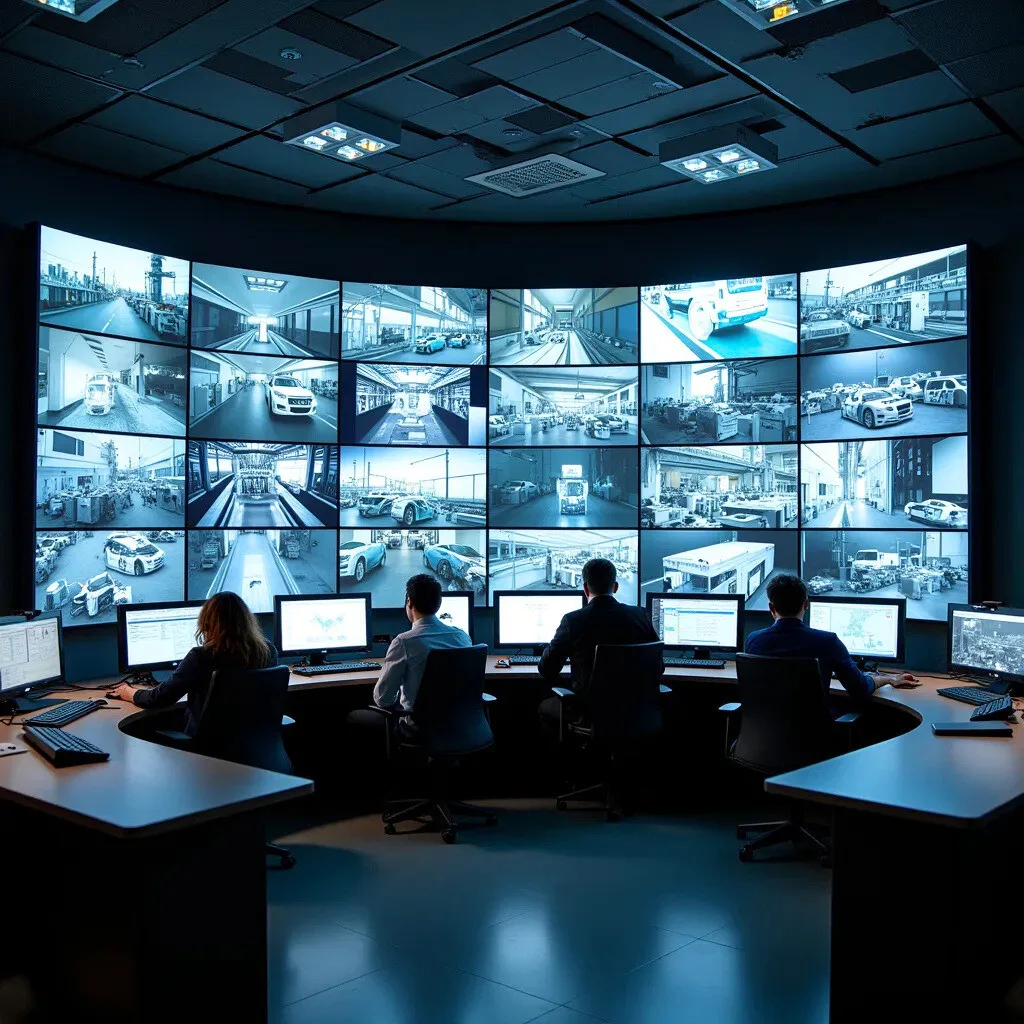Our experience spans two dedicated websites.
Discover the world of Collaborative and Meeting Spaces:
Discover the world of Collaborative and Meeting Spaces:
Last update: 22/05/25
A video wall is composed of several screens that work together as a single display surface for placing different content. These screens usually have reduced edges so that content that overlaps two screens is not cut in half. You have probably seen video walls in airports, television studios, control rooms, shopping malls, theatres, etc.
There are four main video wall technologies: LED panels, rear projection cubes (DLP), TFT/LCD monitors and front projectors. There is also OLED technology, which is very high quality but has a correspondingly high cost, and is only used for very specific needs. All have differences in output quality, projection placement and image retention, so they are suitable for different uses.
In this article we focus on LED panel walls, a product with great potential in a growing market.
The most common uses of LED video walls are as follows:
If the aim is to make the picture wall as large as possible, its shape will be determined by the layout of the room.
A wide, shallow room with a low ceiling will probably require a short, wide picture wall. Other features of the room may result in a picture wall shape that is closer to a square.
But room layout is not the only important factor in determining the height and width of a video wall. The size and aspect ratio of the source content and its intended placement on the video wall also influence its shape and design.
An LED picture wall is, however, a very flexible technology with infinite configuration possibilities. LED walls do not need to have the grid pattern that used to characterise this technology.
For example, Samsung’s ‘The Wall‘ fits around corners, curves and even entire buildings.
There are several models of LED video walls available on the market, which have different technical characteristics depending on :
Once the specifications are well defined, the determining factor is usually the budget.
LED video walls are one of the most popular audiovisual solutions on the market, but they are not ready-made systems: they are technical installations that require a thorough knowledge of audiovisual system design.
If you would like to know more about an LED video wall solution, contact our specialists.

What is the IP rating for an LED display?
IP stands for “Ingress Protection”. The IP rating is a recognised standard established by the International Electrotechnical Commission (IEC). It is used to define the effectiveness of the sealing of an electronic enclosure against intrusions such as dust or water.
All electronic devices can benefit from an IP rating, including an outdoor LED display. In an IP rating, the first number corresponds to the level of protection against solids (sand, etc.), and the second to the level of protection against water intrusion.
What is the main difference between an LCD wall and an LED wall?
Short for “Liquid Crystal Displays”, LCD panels are constructed in a ‘sandwich’ fashion, with a layer of liquid crystal between two pieces of polarised glass (much like your smartphone). The liquid crystals do not produce their own light, so backlights are needed behind the glass to illuminate the screen. This is why the picture can sometimes be a little lacking in brightness.
In addition, when LCD screens are assembled to create a video wall, the edges, i.e. the boundaries between the screen and its frame, are visible.
What can be displayed on an LED video wall?
Anything that can be displayed on a computer can be displayed on a video wall, although audio is not required for an outdoor installation.
What is a bezel?
This is the distance between the image on two adjacent screens. Or the thickness of the frame of a screen, multiplied by two.
Copyright © 2025. MOTILDE. All rights reserved.